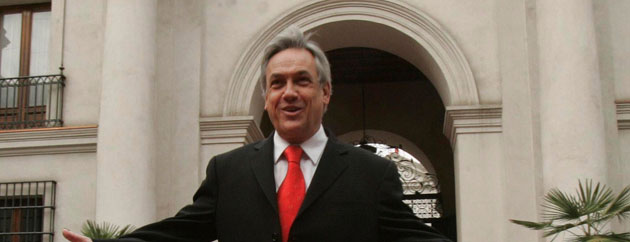
Sebastian Piñera Faces New Struggles as Chile’s President
06 October, 2011Sebastian Piñera became Chile’s president last year as the nation faced a crisis in the aftermath of an 8.8-magntitude earthquake. Less than two years later, as the rescue of the 33 miners that brought Piñera worldwide fame and fleeting national popularity has faded from memory, Chile faces a new set of crises that threaten to derail his presidency.
Many schools throughout the nation of 17 million people remain empty. The winter vacation should have ended in July, but many pupils have not had classes for months as student strikes were organized to demand more government spending on education.
The students claim their higher education system, much of which is privatized, is mediocre at best and too often leaves them saddled with crippling debt upon graduation.
The numbers support their contentions, at least to a point. Chile joined the Organisation for Economic Co-operation and Development last year. Its attainment rating as determined by the Programme for International Student Assessment (PISA) put it thirty-third out of thirty-four OECD nations, topping only Mexico.
It is not that Chileans and their government collectively are not paying for what should, or at least could, be a top-rate education system. Indeed, when you combine public and private expenditures, Chile spent 7.1 percent of its gross domestic product on education, putting it among the world leaders.
The discontent expressed by the massive protests lies in that of the 4.6 percent of GDP that the government spends on education, a mere 0.7 percent of it goes to higher education.
Despite its relative wealth, the government did little to help students pay for their university educations. Chileans pay upwards of 80 percent of their university costs, a rate that puts them easily atop the list of OECD countries.
Piñera’s approval rating has decreased dramatically in recent months. A recent September poll by CERC found only 22 percent of Chilean approving of the billionaire-turned-president.
The approval rating of Piñera, who was elected in a close run-off election against former president Eduardo Frei to become Chile’s first center-right leader since returning to democracy, soared to 63 percent last October following the dramatic rescue of the miners. Chile’s constitution allows presidents to serve one consecutive four-year term.
While the protests have dominated the discourse in Chile for months, Piñera and his government have taken recent action to attempt to rectify the situation. Last week the government proposed a 5 percent increase in public spending which included a 7.2 percent increase in education funding. The increase equates to US $11.65 billion, including a $4 billion fund for college scholarships that would reportedly be spent over four to six years.
“Actually I agree with the main goals of the student movement. What they are saying and telling us is not about our government – they are criticizing former governments,” said Piñera in an October 4 interview with The Financial Times. “The educational system in our country does not have the quality it needs, the access and coverage it needs, and therefore it needs to be changed.”
To blame Piñera’s fall from grace solely on education, however, would ignore several other important factors. His support for the controversial Hidroaysen electricity plan to build five dams on rivers in Patagonia, effectively flooding nearly 15,000 acres of natural reserves, generated far more backlash than Piñera had anticipated.
Some would argue that more so than any one particular issue, it is Piñera’s management and governing-style that has caused many Chileans to sour on him. The Harvard MBA-trained Piñera has centralised decision-making to a far greater extent than Michelle Bachelet, his predecessor who built a reputation as a consensus builder willing to give ministers extensive portfolios.
By no means do Chileans view Piñera as the lone problem, either. The approval rating of the Concertacion, the center-left opposition party that ruled for two decades before Piñera took office, languishes below 30 percent.
Meanwhile, Bachelet has managed to stay above the fray. Now based in New York, Chile’s first woman president currently leads the United Nations Women organization and while she has deflected questions about her political future, it remains very possible she could return to run for president in 2013. Despite some criticism of her handling of the post-earthquake tsunami evacuations, Bachelet would almost assuredly begin any race a strong favorite.
Still, the next presidential election is more than two years away. Piñera has time to turn things around and salvage Chile’s first center-right presidency in a generation. The road back to public confidence and popularity, however, promises to be longer than was the rather sudden one down.
Follow Sounds and Colours: Facebook / Twitter / Instagram / Mixcloud / Soundcloud / Bandcamp
Subscribe to the Sounds and Colours Newsletter for regular updates, news and competitions bringing the best of Latin American culture direct to your Inbox.

